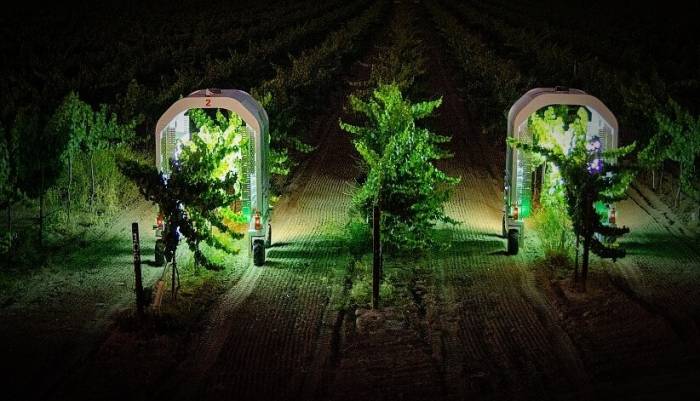Autonomous Robots Using UV-C Light Transform Vineyard Disease Control in California
Santa Maria growers adopt new technology to combat powdery mildew, reduce chemical use and address labor shortages in wine production.
2025-09-10

In the vineyards of Santa Maria, California, a new approach to fighting powdery mildew is taking shape. Bien Nacido Estate, known for its Chardonnay, Pinot Noir, and Syrah, is working with Norwegian startup Saga Robotics to test autonomous robots that use UV-C light to control the persistent fungal disease. The technology is being put to the test in a region where powdery mildew has long challenged wine growers and required regular fungicide applications.
Greg Gonzalez, vineyard manager at Bien Nacido Estate, has seen firsthand how the robots are changing vineyard management. “We have a client that has been taking Chardonnay from us for over 35 years, and he says it’s the cleanest he’s ever seen the fruit,” Gonzalez said during a recent visit to the estate. The robots, developed by Saga Robotics and named Thorvald, move through the rows at night, emitting UV-C light that damages the DNA of powdery mildew spores and prevents them from reproducing.
Saga Robotics was founded in 2016 by Dr. Pål Johan From and Dr. Lars Grimstad. The company’s Thorvald platform is already in use with 13 leading strawberry growers in the UK and now covers more than 1,300 acres of vineyards in California. Dr. From, who recently relocated to California to lead U.S. operations, explained that the company operates on a Robots as a Service (RaaS) model. Growers pay a fee per acre for treatment rather than purchasing the robots outright.
The business case for using UV-C robots is growing stronger as traditional fungicides lose effectiveness against powdery mildew. According to From, growers often see returns through higher yields and reduced labor costs. “We’ve proven Thorvald works; now we’re scaling it,” he said. Saga Robotics recently raised $11.2 million to expand its fleet and aims to triple its presence in U.S. vineyards next year.
The Thorvald robots are battery-powered and designed for flexibility. In addition to applying UV-C light, they can be equipped with tools for other tasks such as releasing beneficial insects or mites for biological pest control, collecting data for disease detection and yield prediction, and even cutting runners in strawberry fields. For yield prediction in vineyards, the robots gather data on grape clusters and berry size to help forecast harvests.
At Bien Nacido Estate, integrating new technology into daily operations requires careful planning and communication with staff. Gonzalez emphasized the importance of involving everyone in the process to ensure smooth adoption. The robots have proven reliable so far, but initial planning remains key to successful implementation.
Saga Robotics is seeing increased interest from California growers as concerns about chemical resistance and labor shortages grow. The company’s expansion plans include not only more vineyards but also greater penetration into other crops such as strawberries in both the U.S. and UK markets.
The use of UV-C light as an alternative to chemical sprays represents a shift toward more sustainable vineyard management practices. As Saga Robotics continues to scale up its operations, more growers may soon rely on autonomous robots to keep their crops healthy while reducing chemical inputs and labor demands.
Founded in 2007, Vinetur® is a registered trademark of VGSC S.L. with a long history in the wine industry.
VGSC, S.L. with VAT number B70255591 is a spanish company legally registered in the Commercial Register of the city of Santiago de Compostela, with registration number: Bulletin 181, Reference 356049 in Volume 13, Page 107, Section 6, Sheet 45028, Entry 2.
Email: [email protected]
Headquarters and offices located in Vilagarcia de Arousa, Spain.